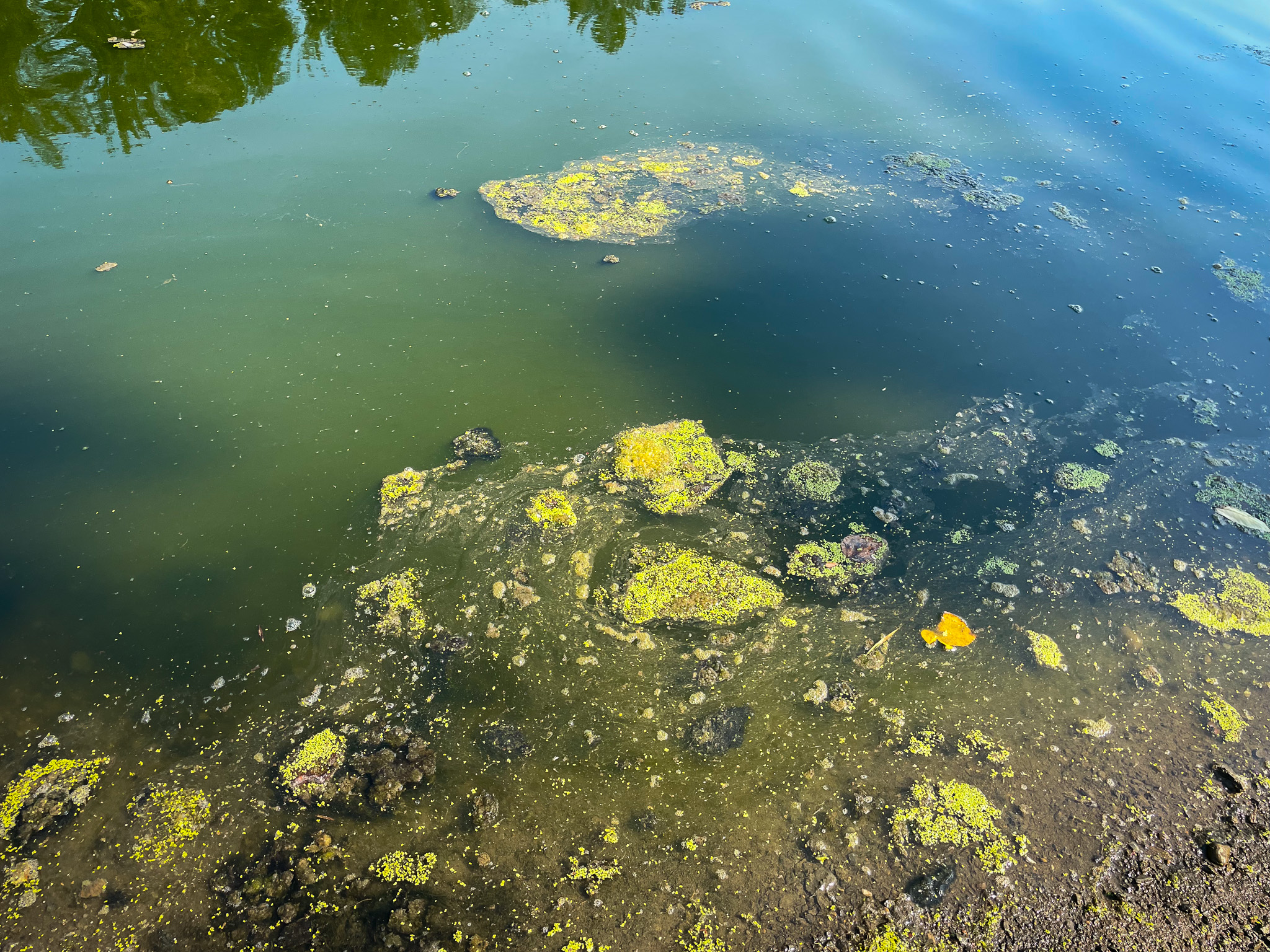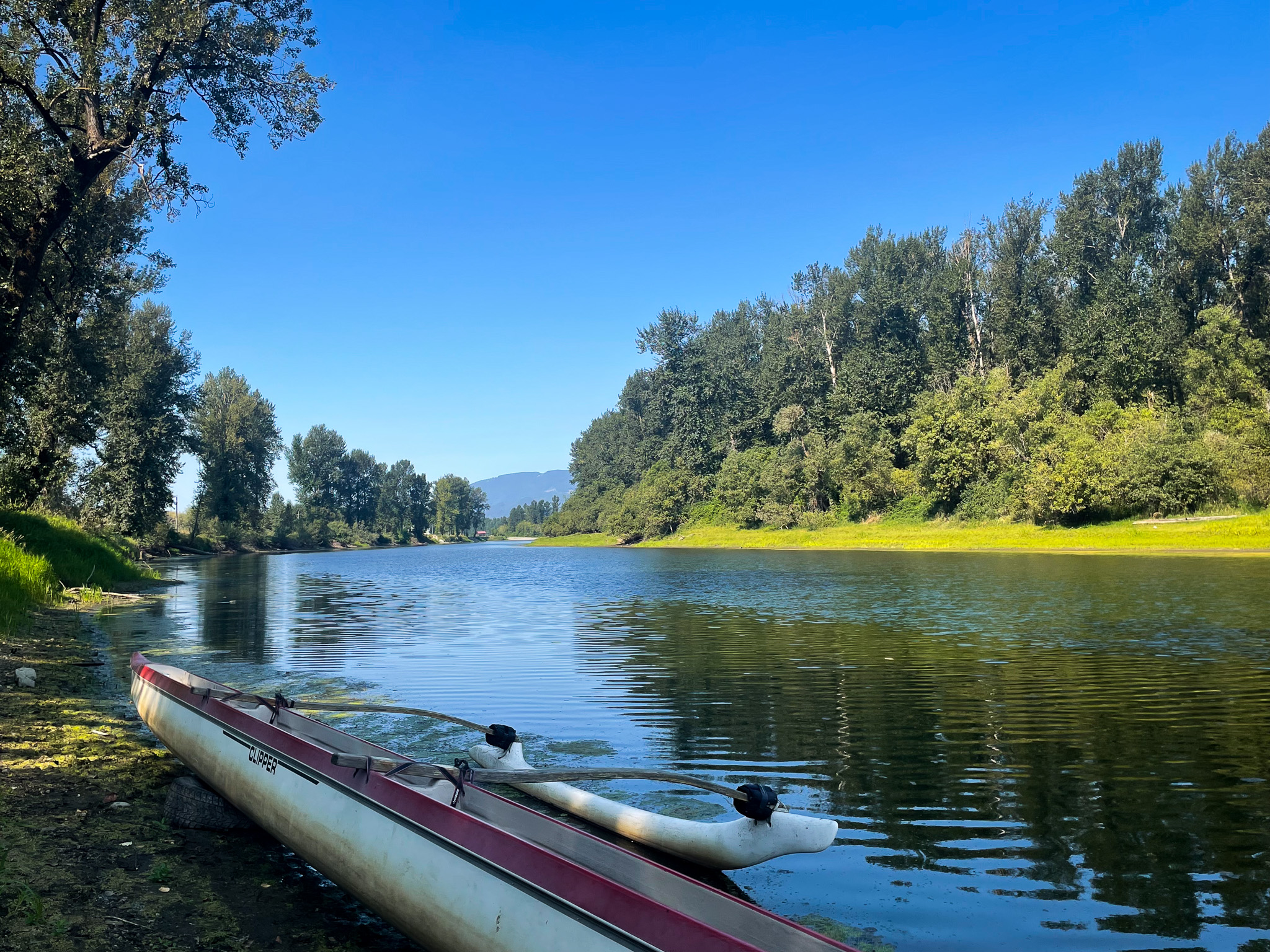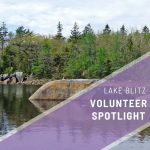Understanding green waters
Sqwá First Nation looks to water quality monitoring
Thick with algae and nearly as green as the vegetation growing along its shoreline, the Hope Slough, also called the Hope River, creeps through the City of Chilliwack and into the Fraser River. Historically, the Hope Slough supported a biodiverse and healthy ecosystem before algae choked its waters. A recent water quality monitoring training equipped members of the Sqwá (Skwah) First Nation to better understand the state of this river with future restoration efforts in mind.
In mid-August, Living Lakes Canada, in collaboration with the British Columbia Lakes Stewardship Society (BCLSS), delivered a three-day training to Sqwá First Nation youth and community members on how to evaluate freshwater health. Along the banks of the Hope Slough, nine youth and two adults gathered to learn about the value of water quality monitoring and gain hands-on experience with monitoring equipment.
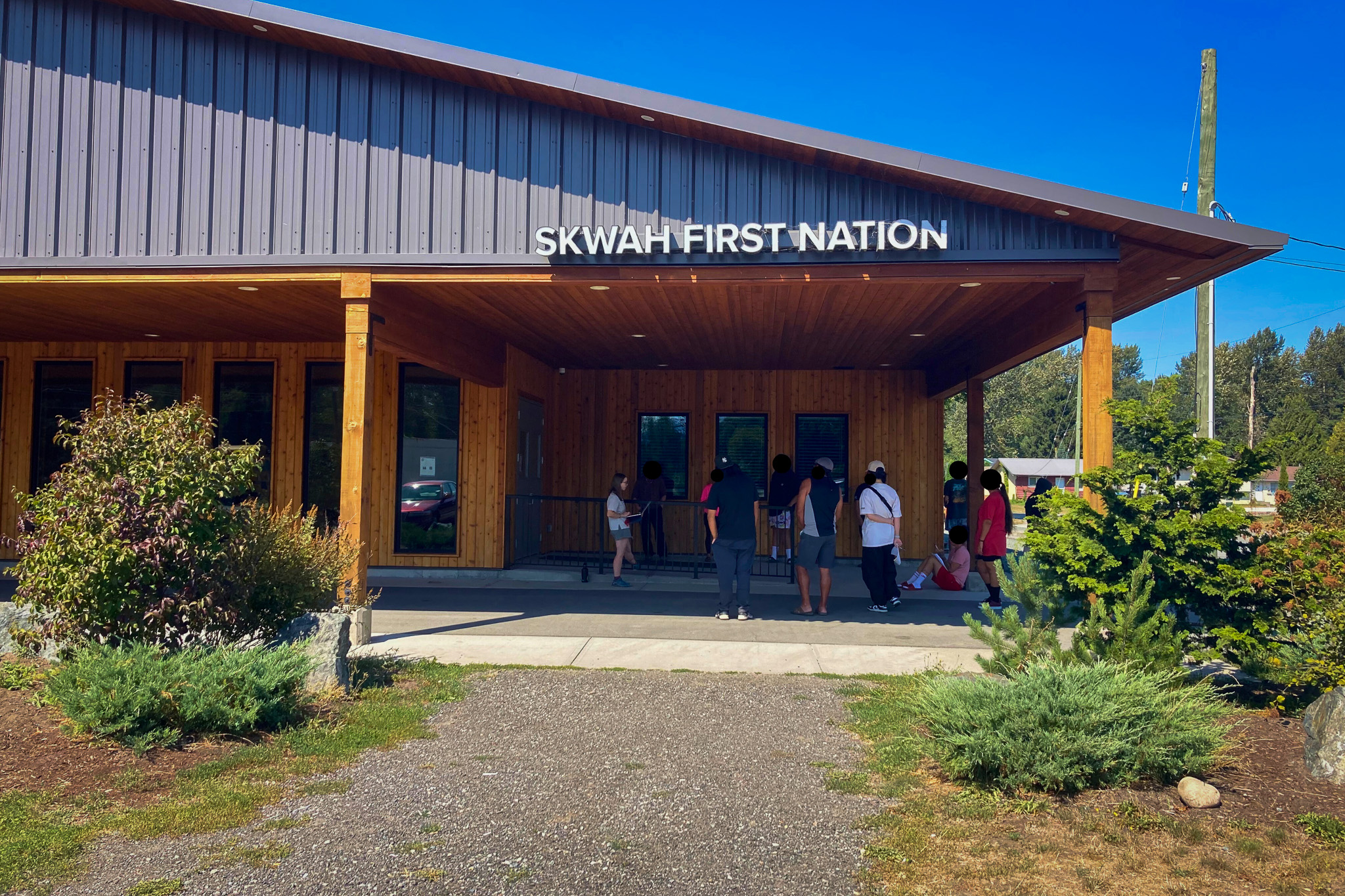
Taking into account the participants’ passion for fish, the workshop integrated conversations on what good quality fish habitat looks like and how water quality monitoring can track important parameters for healthy fish populations. The group gathered water samples and tested for dissolved oxygen and water temperature (both critical for fish health), as well as pH and conductivity. Participants also practised recording data and field notes – an important part of tracking water quality changes over time.
“Greatest thanks to Living Lakes and the BCLSS for providing water quality training within our community, and offering our youth a strong direction towards land stewardship, like our ancestors once had in the past,” said Slade Williams, a training participant and Sqwá First Nation member.
Surrounded by crop fields with cows bellowing in the distance, the Sqwá members spoke about one of their biggest concerns for the Hope Slough: the impacts from the significant agricultural industry sowing fertile Fraser Valley soils. Excessive nutrient runoff from fields into the river water has contributed to harmful algal blooms. The side effects include decreased sunlight for aquatic life, reduced dissolved oxygen for fish, and the potential for blooms to turn toxic.
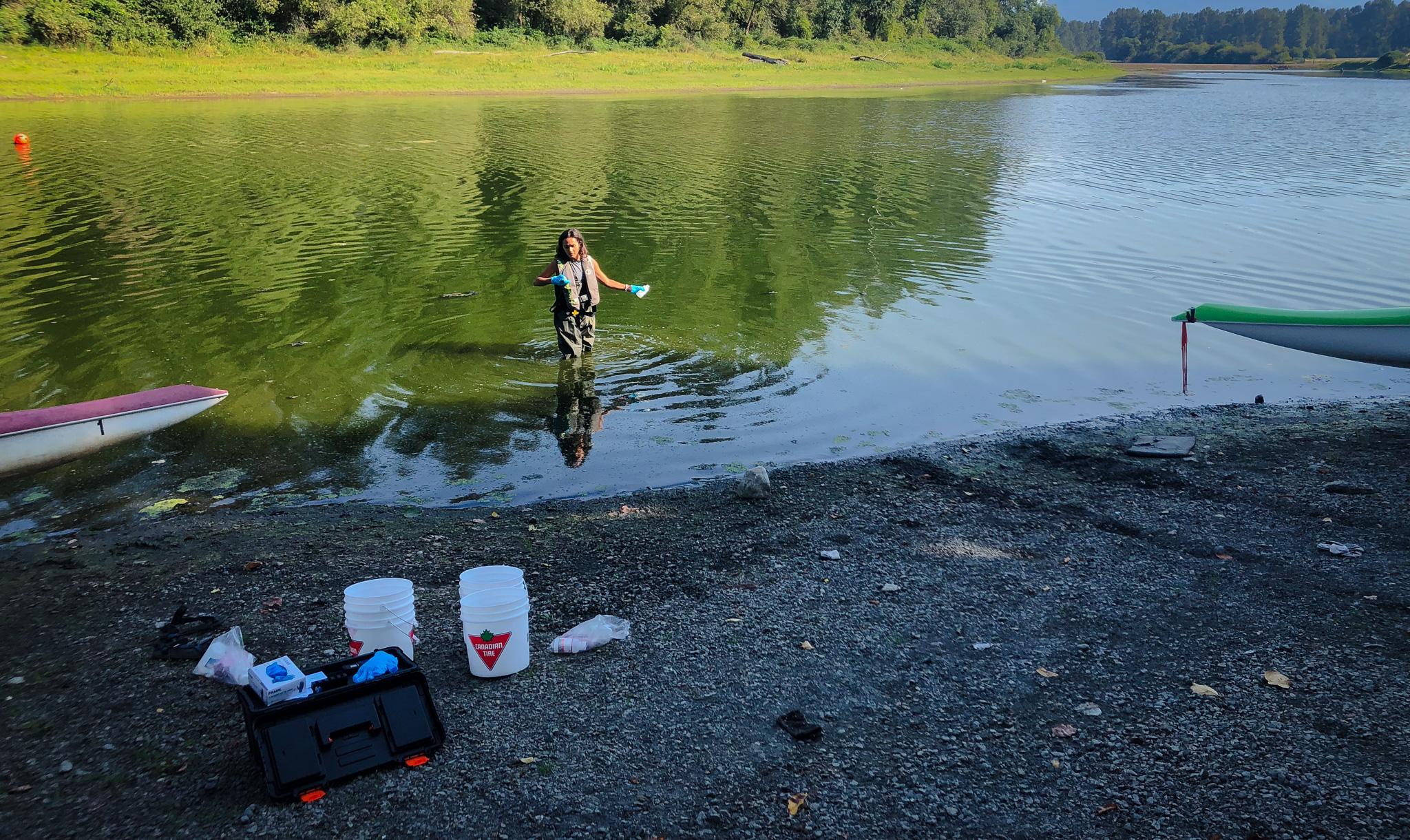
Looming over the training were high temperatures and dire drought conditions in the local area and across other B.C. watersheds. Climate change impacts were top of mind and led to group discussions of how climate change affects water quality. Increases in water temperature and decreases in surface water levels raise concerns for fish populations and overall slough health.
Water quality monitoring provides an inside look at how various impacts, including nutrient runoff and climate change, are affecting water quality and aquatic wildlife. Understanding the current state of water is a critical step to guide Sqwá First Nation restoration efforts.
Many of the participants spoke about their personal connection to the Hope Slough. Some grew up near the river, canoeing along its lazy waters. This highlighted the importance of protecting and restoring these waters, not just for ecological reasons, but also cultural ones.
This training was delivered as part of Living Lakes Canada’s Action for Healthy Watersheds Program. For more information about the program and water quality monitoring training, please contact Sophie Gonthier, Lakes Program Coordinator, at sophie@livinglakescanada.ca.


